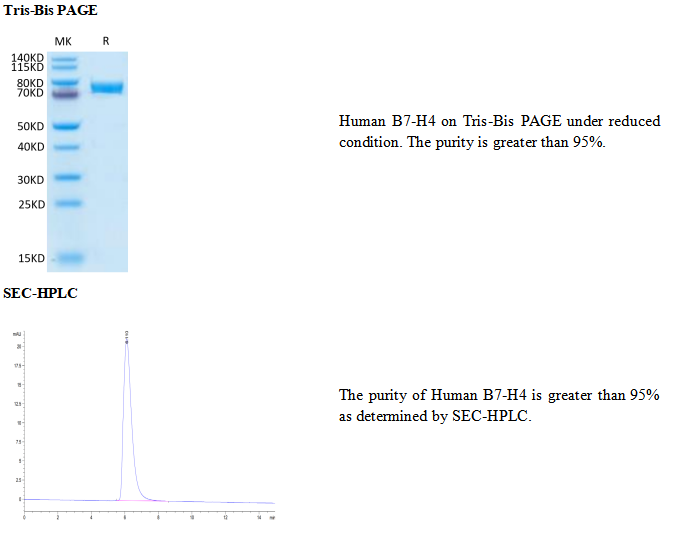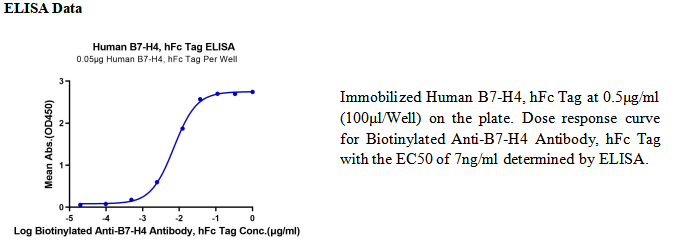B7-H4, also known as VTCN1, B7x and B7S1, is a 50-80 kDa glycosylated member of the BTN/MOG family of immunomodulatory protein. Mature human B7-H4 consists of a 235 amino acid (aa) extracellular domain (ECD) with one Ig-like V-set domain and one Ig-like C2-set domain, a 21 aa transmembrane segment, and a 2 aa cytoplasmic tail. Within the ECD, human B7-H4 shares 90% aa sequence identity with mouse and rat B7-H4. It shares 22%-28% aa sequence identity with human B7-1, B7-2, B7-H1, B7-H2, B7-H3, and PD-L2. Alternate splicing of human B7-H4 generates an additional isoform that lacks the first Ig-like domain. B7-H4 is expressed on the surface of activated lymphocytes, macrophages, monocytes, dendritic cells, epithelial cells, and bone marrow-derived mesenchymal stem cells. Following binding to activated T cells, B7-H4 serves as a co-inhibitor of the T cell response. This is accomplished by reverse signaling that can induce either cell cycle arrest, or apoptosis in B7-H4 expressing cells. B7-H4 is up-regulated in several carcinomas in correlation with tumor progression and metastasis. A soluble form of B7-H4 is elevated in the serum of ovarian cancer, renal cell carcinoma, and rheumatoid arthritis patients, also in correlation with advanced disease status. Soluble B7-H4 functions as a decoy molecule that blocks the inhibitory influence of B7‑H4 on immune activation. Despite evidence for the involvement of B7-H4 in immune regulation, mice deficient in its expression do not show significant immune deficiencies, suggesting compensation by other molecules in vivo.
高纯度、高活性、低内毒素、高批间一致性
产品数据


-25 ~ -15℃保存,收到货之后有效期1年。 复溶后, 无菌条件下,-85 ~ -65℃保存,3个月有效期。





